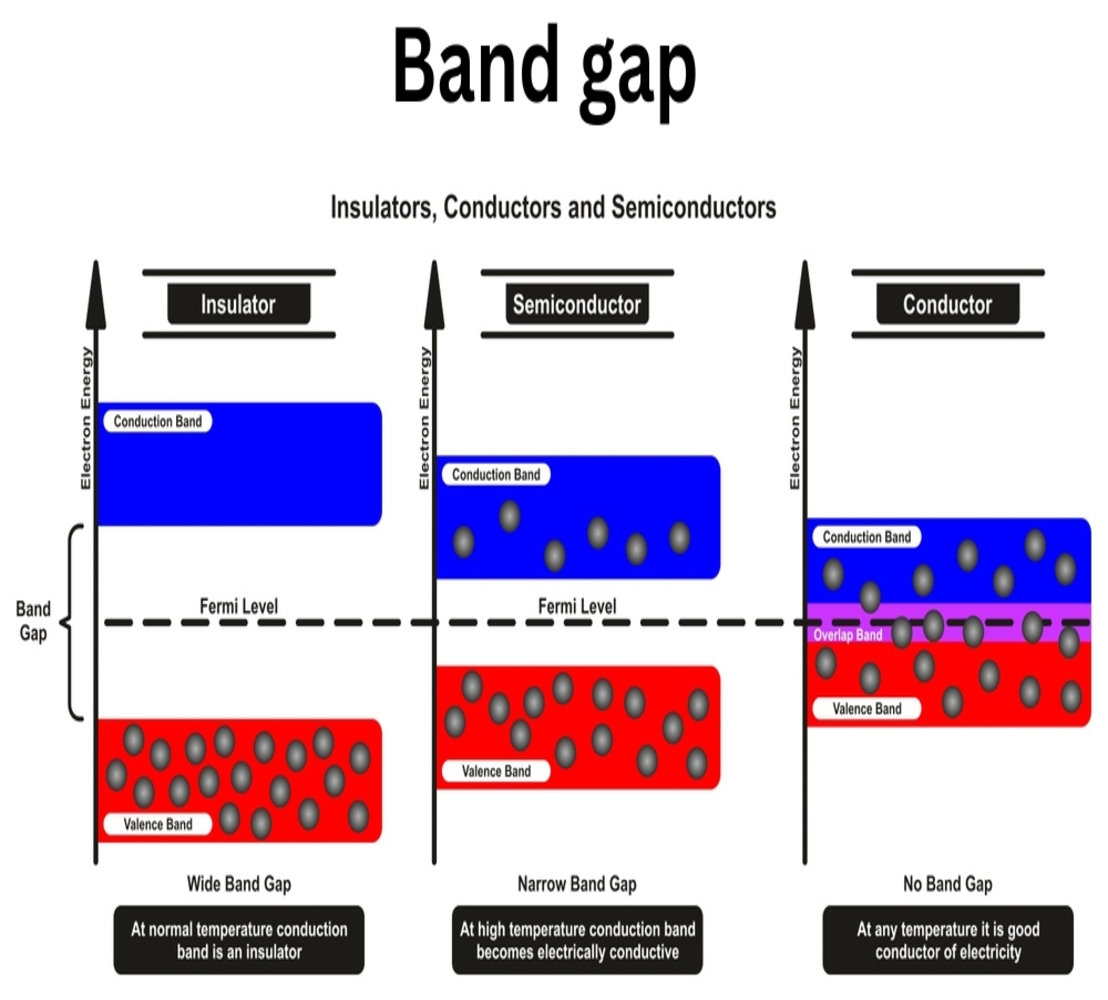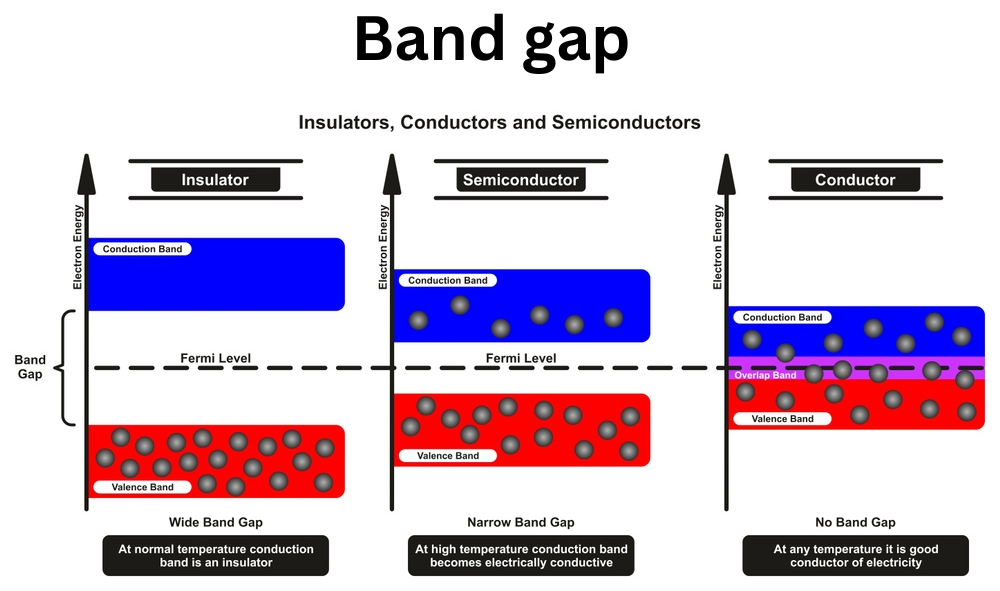Introduction
The band gap is a key concept in materials science, affecting a material’s electrical and optical properties. It shapes conductive and insulating behavior, guiding electronic device design. This blog explores its significance, influence on materials, and role in modern electronic innovations.
Defination of band gap
The band gap is an energy range in a material’s electronic structure where electrons cannot exist in energy states. Electron energy levels form bands—primarily the valence band and the conduction band.
1.Valence Band
This is the operator energy band, wherein the electrons tolerated atoms. The valence band electrons are, in general, locked in a bond’s chemical loading and thus do not move freely. This makes the material insulator by nature.
2.Conduction Band
Be above the valence band, the conduction bands forms high energy levels that have got free moving electrons and get conducted, thus the electricity is modeled. The conductors are materials that have the electronic configurations and fill of the valence band.
Understanding Band Gap Types
1.Zero Band Gap (Metal)
Finally but not last, education and information are the central pillars to be promoted.
On the other extreme from semiconductors, metals are semimetals- which implies the valence and conduction bands of metals will be overlapping. A factor that enables the electrons to move without restriction being an essential aspect of metal conductivity which facilitates the transfer of electricity quickly.
2.Direct Band Gap
Materials that have direct electronic band gap bridge a band of valence at the same energy that the conduction band minima remain. This is because the bond nodes are conjugated and which eliminates the need for intersystem transitions that could be responsible for a wide band gap materials and are used in all the optoelectronic based devices which include LED's and lasers.
3. Indirect Band Gap
A minor part of semiconductors called the indirect band gap, when all the electronic states in the valence band and the conduction band, aren’t in line. The electrons show transitions into other energy bands, however they do not obey the mass conservation requirement and therefore are unsuitable for the optical application.
Applications and Significance
1.Semiconductors
Band gap is a cardinal figure in semiconductor technology. With the aid of band gap modification, engineers can fine tune the conductivity thereby making semiconductor materials apt for transistors, diodes, and integrated circuits in electronic equipment.
2.Optoelectronics
Optoelectronic devices such as light-emitting diodes (LEDs), solar cells, and lasers depend on the band gaps which enable the units to regulate outward emission of light or inward absorption of light. The photon energy is the reason for the band gap.
3.Thermoelectric Materials
Materials with specific band gap properties are an object of investigation for their role in the field of thermoelectric applications. Such materials have the ability to transform heat the electrical one which creates the space for energy harvesting.
4.Photonic Devices
Band gap engineering is pivotal for the optical crystals architecture by allowing the light transmission regulation. This may be used in direction for realizing optical circuits and devices.
Conclusion
The band gap, typically seen as a theoretical idea, influences the electronic and optical properties of materials. It controls the behavior of materials in technology, from semiconductors to LEDs. Researchers explore band gap manipulation for advancements in electronics.

